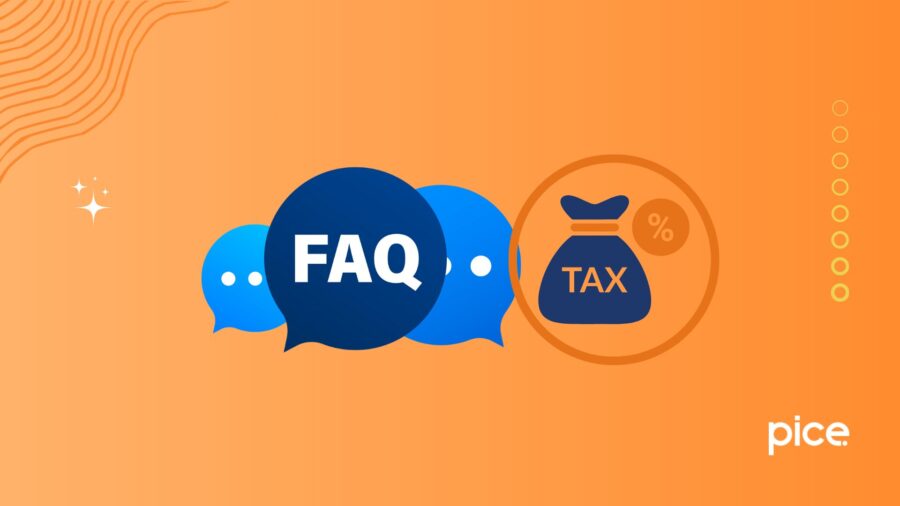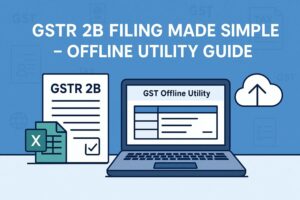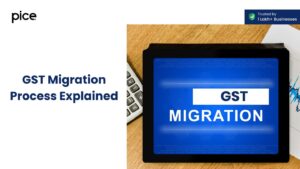FAQ on GST: Frequently Asked Questions
- 16 Jan 25
- 6 mins

FAQ on GST: Frequently Asked Questions
Key Takeaways
- GST is a unified tax system implemented across India on July 1, 2017.
- GST registration is mandatory for businesses in inter-state trade, e-commerce, and import-export.
- GST includes SGST, CGST, and IGST, catering to intra and inter-state transactions.
- The tax credit mechanism ensures GST is applied only on value addition at each supply chain stage.
- Compliance with GST registration and filing is crucial to avoid penalties and manage taxes efficiently.
On July 1, 2017, India transitioned to a new tax framework designed to establish a unified market across the country. If you are unfamiliar with GST registration and want to learn how this tax system might impact you and your business, go through this blog.
Here you will get a clear idea of the GST system and its crucial aspects.
What Is GST?
The GST is a comprehensive tax imposed on the production, sale, and consumption of goods and services that are provided nationwide. It replaces most of the indirect taxes that were previously applied at both the central and state levels.
This unified tax system features a consistent tax rate applicable to both goods and services throughout India, with payment due at the final stage of consumption. At each level of the sales or purchase process within the supply chain, there is a tax liability on the value added to goods and services utilising a tax credit mechanism.
Who Should Register for GST?
The following outlines who should register for GST:
- Casual taxable individuals
- Entities making inter-state taxable transactions
- Agents representing registered taxpayers
- Non-resident casual taxable individuals
- E-commerce platforms
- Input Service Distributors
- Parties responsible for TDS or TCS deductions
- Individuals conducting business outside their registered state
- Sellers on e-commerce platforms like Flipkart, Amazon, etc.
- Individuals managing aggregator platforms
- Participants in the import-export trade
- Those subject to reverse charge mechanisms
- Businesses previously registered under taxes like VAT, excise duty or service tax
- Providers of OIDAR (Online Information Database Access and Retrieval) services in India
What Are the Different Types of GST?
The following are the different types of GST:
- State Goods & Service Tax (SGST): It is collected by the state for intrastate supplies of goods and services.
- Central Goods & Service Tax (CGST): It is collected by the Centre for intrastate supplies of goods and services.
- Integrated Goods & Service Tax (IGST): It is collected by the Centre for interstate supplies.
Conclusion
Businesses, especially those engaged in interstate trade or e-commerce, must ensure they are compliant with the GST registration requirements to avoid unnecessary tax liabilities. By understanding the various types of GST returns, businesses can manage their tax responsibilities effectively, ultimately reducing the risk of errors or penalties related to tax compliance.
💡If you want to streamline your payment and make GST payments, consider using the PICE App. Explore the PICE App today and take your business to new heights.
FAQ on GST
Who is responsible for paying the tax if the supply is received from an unregistered supplier?
What are the different documents you need for GST registration?
Recent passport-size photographs
Identity proof such as an Aadhaar card, driving licence or passport
Address proof of your business premises
Bank account details (bank statement or passbook)
Partnership deed for partnership firms
Certificate of Incorporation for entities like Private Limited Companies, LLPs, or OPCs
What is the intra-state and inter-state supply of goods and services?
How long can I delay my GST registration?
Is the value of inward supplies subject to Reverse Charge Mechanism (RCM) included in the aggregate turnover?
What is an electronic credit ledger?
What is an electronic cash ledger?
0% for essential goods
5% for basic necessities
12% for standard items
18% for most consumer products
28% for luxury and indulgent items
What are the different tax rates applicable to goods and services?
What information must be included in a tax invoice?
What is a credit not under GST?
What is the GSTR-1 return form?
What is a composite supply?
What is the annual return, and when is it due for filing returns?
Casual taxable persons
Non-resident taxable persons
Input Service Distributors (ISD)
Entities authorised to deduct or collect tax at source
The due date for filing the annual return is December 31st of the following financial year.
 By
By 
















